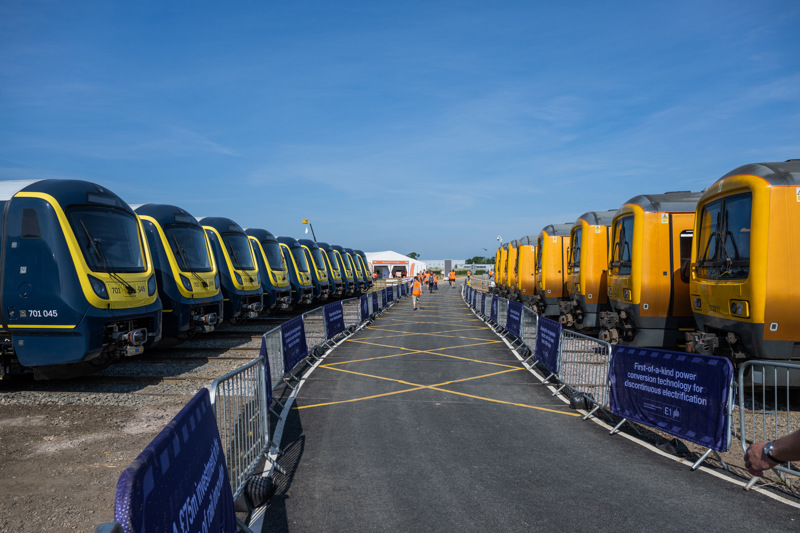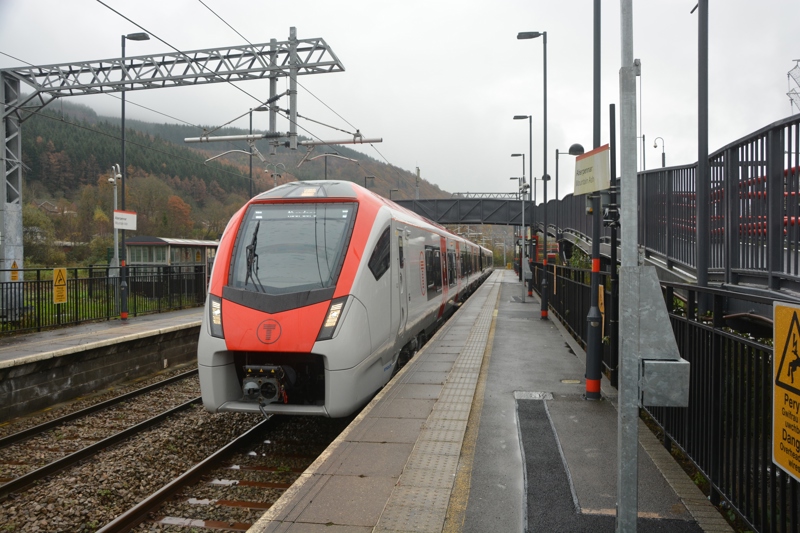
The UK rail industry has suffered from a lack of rolling stock strategy over the past 30 years.

The UK rail industry has suffered from a lack of rolling stock strategy over the past 30 years.
That was the view of a panel at this year’s Rail Live that asked how the industry can be better prepared in future.
Ian Prosser, former HM Chief Inspector of Railways and Director of Double O Safety Consulting, said that during his 16 years in his inspector role the rail industry failed to provide trains “people want or like”, pointing towards issues such as seat comfort.
“There's been a lack of a unified strategy for traction and rolling stock,” he said.
“You can't just do one and not the other. So, you need a unified traction and rolling stock strategy. And that then means that you've got some opportunities to actually have something that's more efficient and effective because we've been scrapping trains that are perfectly good and keeping old ones that are getting pretty near their end of lives.”
His thoughts were echoed by Graeme Clark, Head of Business Development Rolling Stock, Siemens Mobility UK&I.
He told the audience: “I think it’s been a bit chaotic, to be quite honest. There’s not really been much in the way of a strategy that we can follow. And I think one of the mistakes we’re still making is we’re not considering the railway as a whole.
“You can’t consider the trains, the power supply, the traction supply, whatever you’re doing, separately.”
Clark said UK is “far too prescriptive” in its specifications, saying manufacturers should be given requirement-based specifications rather than prescriptive ones which don’t hinder their “ability to deliver what we think is the best train” which is the same regardless of which part of the country it’s running in.
While manufacturers should be able to work out specifics of requirements, Prosser said clear standards would be needed as part of a strategy, warning that inconsistencies have caused more problems.
Traction
Focusing on traction, Clark said he’d also like a strategy that commits to getting rid of diesel and not “hide behind the fact that a diesel bi-mode is still a diesel”.
“'I’d like to see a strategy, and I'm hoping GBR (Great British Railways) is going to do this, which says that we are going to head towards a fully electric railway, because I don't think anybody would argue that an electric railway everywhere is the best way to go,” he said.
He acknowledged that full electrification would not be affordable, but discontinuous overhead line equipment could be and be something that’s built upon and expanded.
“At the top level, I'd like to see things like that, that says by a certain date in the future we are going to have a fully electric railway, and we can start by saying, ‘well, no more diesels, we don't need diesels, there's a better technology, it's cheaper, it's more efficient, it's cleaner’.
“I'd like to see a much, much better definition of what we're trying to achieve environmentally, because we look, and the train we're developing now, all the trains we develop, we look at the Department of Transport's advisory guidance, the TAG guidelines, which allocate costs to emissions, but I've not yet seen a specification that takes any of that into account.”
Accessibility

The audience heard the panel’s thoughts on accessibility too.
Adam Sergent, Equality Diversity & Inclusion Manager at Young Railway Professionals, said that while carriages in use at the start of privatisation such as Mk 1s, Mk 2s and Mk 3s, had disabled toilets, modern equivalents were bigger and “spread throughout the train”.
He added: “I think we also need to look at certain routes, because I have noticed certain routes and corridors have different needs and different barriers.
“So, for example, if you look at High Speed One, you get so many cycles on there that there have been instances where I've seen passengers in wheelchairs unable to go to the toilet.
“And then you've got the East Coast main line where you've got so many people going on holiday and you've got all these suitcases that people are using the wheelchair bays, for instance, as luggage storage. You can put as many signs up as you want. The reality is people are prepared to do it.”
He said it’s important trains have more single seating to prevent bag blocking on busy routes.
Clark admitted it would take “a long, long time to make the railway fully accessible” with trains having lifespans of up to 40 years, including some being bought now which “have got terrible accessibility”.
“I think we need to understand where we want to get to, and start putting the big building blocks in place, and let's say, get on with it, because it's the old, old story, you wouldn't start from here, but if we always say that, then we'll always end up with a suboptimal railway, but I think we've got a fantastic chance to make a difference now,” he said.
Login to continue reading
Or register with RAIL to keep up-to-date with the latest news, insight and opinion.


















Adamedwards17 - 02/07/2025 15:06
So agree with this. It's extraordinary that the 395 Javelins have been refurbished and still have no cycle storage spaces with secure straps (see 720s on GA as models of good practice). Yet cycles on these trains is seen as a "problem" not a vital contribution to travel and tourism in Kent. If you refurbish a trina, adding safe secure cycle storage should be complusory. Sadly it's probably going to take an accident when a heavily laden cycle falls on a passenger for the mindset to change.